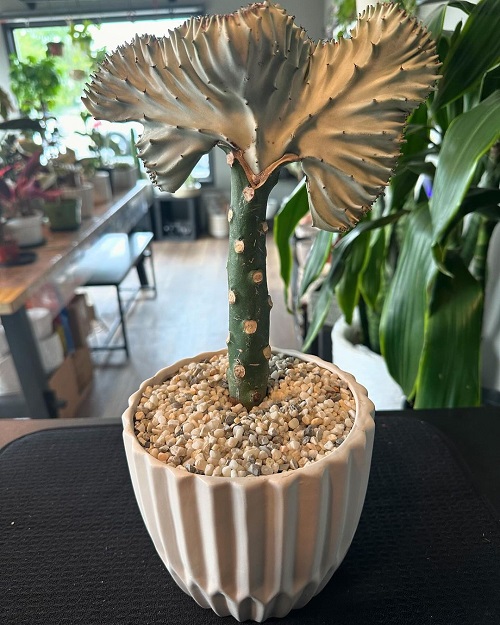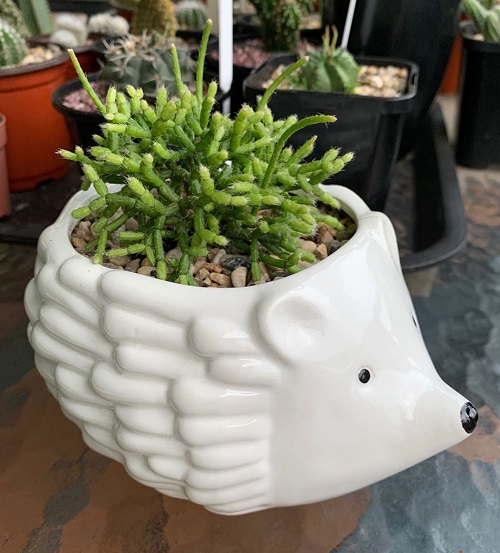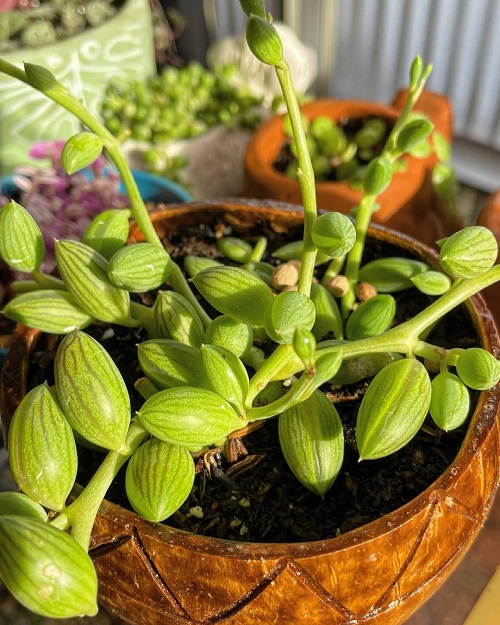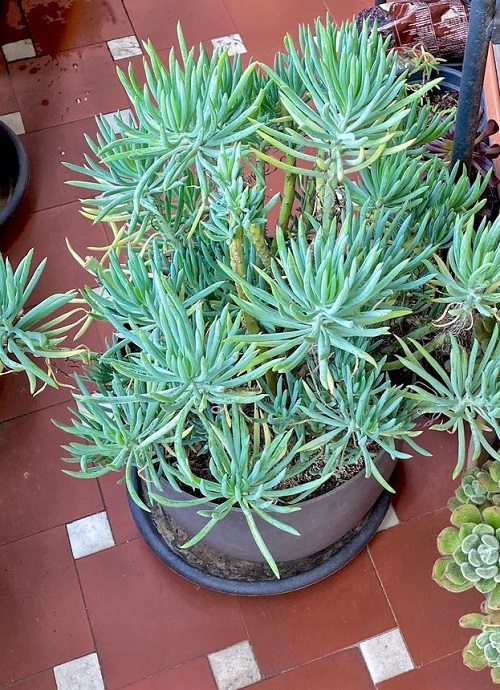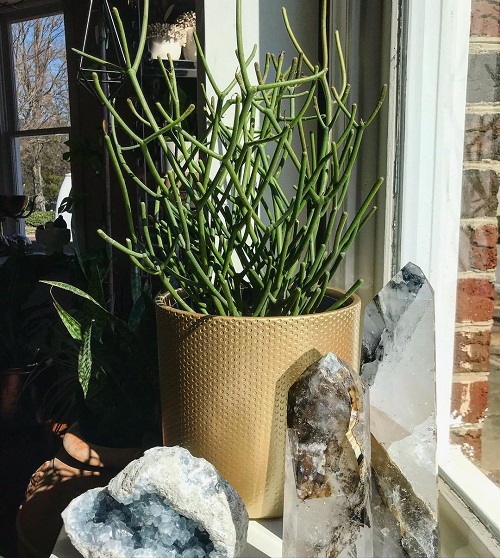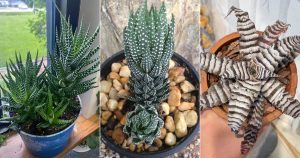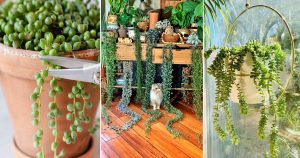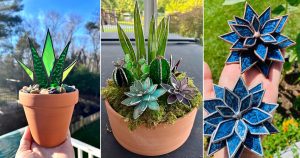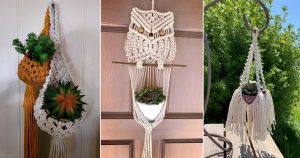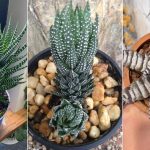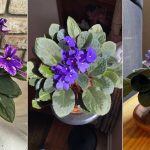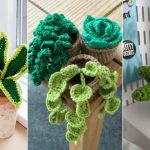Get ready to be mesmerized by underwater wonders in the form of Succulents That Look Like Coral. Check out our collection.
These plants will give you a glimpse of the ocean’s majesty without leaving your garden or indoor space. It’s like having a seascape at your fingertips. Discover the beauty of these Succulents that look like coral!
Succulents That Look Like Coral
1. Euphorbia lactea ‘Cristata’
Euphorbia lactea ‘Cristata’ is a brain-looking plant because of its unique combination of two kinds of succulents—the upper part, which ranges from green to bluish gray to whitish green, is like the crest of Euphorbia lactea, and the green stems are of Euphorbia neriifolia. This gives it a similar appearance to saddle carpet anemone, which is a fan-like coral.
You can keep this as a houseplant as it’s easy to maintain and care for but handle with care due to its latex sap toxicity to humans and pets.
2. Sedum rubrotinctum
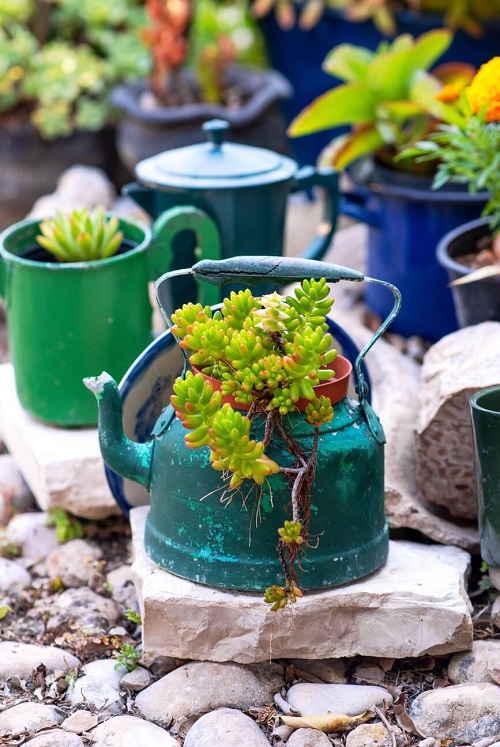
This one is a low-growing, evergreen perennial plant featuring chubby leaves that spiral around the sprawling stems. They change color with the seasons, like in summer leaves become deep red before reverting to green in winter. Between this transitional phase, they resemble the pink-tipped anemone’s coral tentacles, but they are more elongated.
Sedum rubrotinctum can become a great companion with other succulents in rock gardens or containers. And the best part is that it requires incredibly low maintenance and can thrive even with neglect!
3. Echeveria ‘Cubic Frost Cristata’
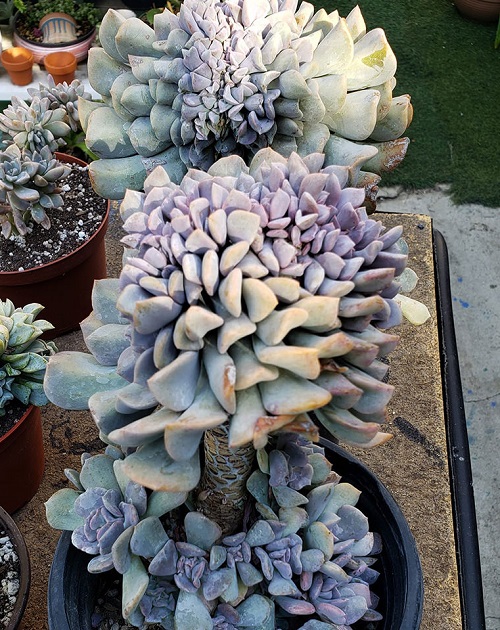
Echeveria ‘Cubic Frost Cristata’ is a favorite plant in gardeners’ succulent collections due to its crested growth habit. Its leaves are closely packed atop its stems and are light to lilac pink in color, giving it a smaller, intricate resemblance to tight-knit coral reefs.
However, note that it is sensitive to winter and should be kept indoors in winter and placed near the brightest window, in spring, it likes full to partial sun. Watering should be done using the “soak and dry” method!
4. Rhipsalis cereuscula
Rhipsalis cereuscula is a shrubby cactus with erect stems that grow 3 feet long and eventually become pendant as they mature. This gives the plant a mesmerizing appearance, just like organ pipe coral looks with its tentacles. The plant also produces greenish-white flowers, followed by small white berries.
To keep this cactus thriving, provide morning sun and full afternoon shade, as direct sunlight can scorch its leaves. While it is not drought tolerant, regular irrigation is necessary. Be cautious not to overwater to prevent stem rot.
Tip: Indoors, place it 20 inches away from the window to avoid intense midday sun!
5. Curio herreanus
In the early stages of growth, Curio herreanus may be similar to colorful corals, particularly green acropora humilis, when its miniature watermelon-like leaves hug the soil. Later, it develops stunning trailing vines over 12 inches long. Its leaves are green in color with dark green or purple outlines.
Keep this succulent in partial shade outdoors and under bright sunlight indoors. Avoiding full shade may cause a lank and leggy appearance. Propagating a string of watermelon plants is really easy if provided with the appropriate care and growing tips.
6. Echeveria Coral Reef
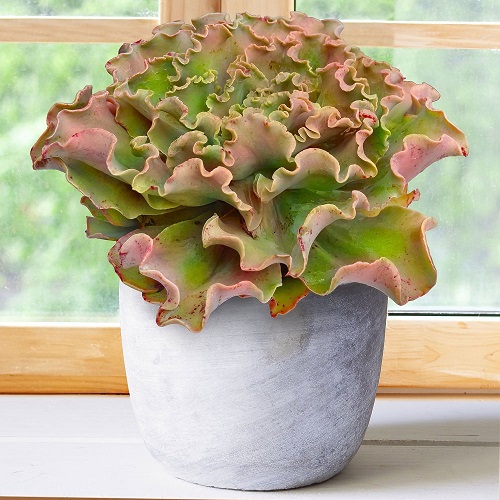
This succulent is famous for its exceptional adaptability and resilience. It can thrive in diverse environments with different soil pHs, i.e., acidic to slightly alkaline.
Echeveria Coral Reef’s evergreen foliage shares very much similarity to underwater coral reefs. It produces showy flowers that attract hummingbirds and add dynamic elements to the xeriscape and garden.
7. Senecio mandraliscae
Native to South Africa, it is a spreading succulent that grows about 12-18 inches tall and 18-24 inches wide. Its silver-blue leaves grow upward in curving tips, looking like the ocean has landed on Earth in the form of an underwater coral show!
Senecio mandraliscae is a beautiful plant for any garden or container, but please note that it’s toxic to pets, so handling it with care should be your main concern!
8. Euphorbia tirucalli
Euphorbia tirucalli is a beautiful succulent that forms colorful thickets, loose branches, and vertical reddish-golden, pencil-like stems growing upwards. It is also known as fire sticks because its stems change color, become yellow in summer, and back to a reddish tone in winter.
The plant’s new leaves are small and drop off quickly. Due to its striking resemblance to staghorn coral, it is great for water-wise gardens, giving seascape views. Just give it full sun and less water with well-drained soil!
9. Aeonium ‘Sunburst Cristatum’
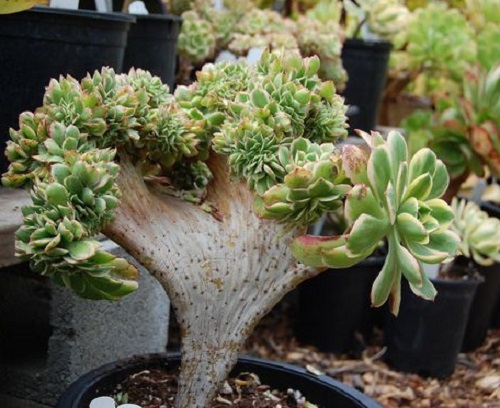
It looks like a mini coral tree, doesn’t it? Look at the picture! Aeonium ‘Sunburst Cristatum’ has flat stems with numerous small rosettes. It has variegated leaves with creamy-yellowish-green outer portions.
Unlike other succulents, this plant likes to stay in moist shade and abhors hot or dry conditions. During summers, it may enter the dormant phase, requiring minimal water to prevent excessive water loss. It begins to flourish in winter through spring. Hardy in USDA zones 9b-11b. And repotting is not needed for 2-3 years.

